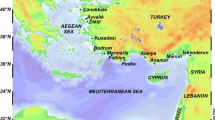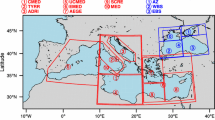Summary
The Bangladesh coast, which lies on the confluence of three mighty rivers, the Ganges, the Brahmaputra and the Meghna, with the Himalayas to the north and the Bay of Bengal to the south, is an ideal zone for sea level rise due to enhanced rainfall during the monsoon season from June to September. An attempt has been made here to look into the cause-effect relationships between observed trends in sea surface temperature (SST) over the Bay of Bengal and the trends in monsoon rains and sea level in Bangladesh. The study utilizes the 14-year satellite-derived SSTs over the Bay of Bengal for 1985–1998, the tide gauge stations data along the Bangladesh coast for 1977–1998 and the 31-year monsoon rainfall data for Bangladesh, 1961–1991.
Similar content being viewed by others
Author information
Authors and Affiliations
Additional information
Received October 20, 2000
Rights and permissions
About this article
Cite this article
Singh, O. Cause-effect relationships between sea surface temperature, precipitation and sea level along the Bangladesh coast. Theor Appl Climatol 68, 233–243 (2001). https://doi.org/10.1007/s007040170048
Issue Date:
DOI: https://doi.org/10.1007/s007040170048




